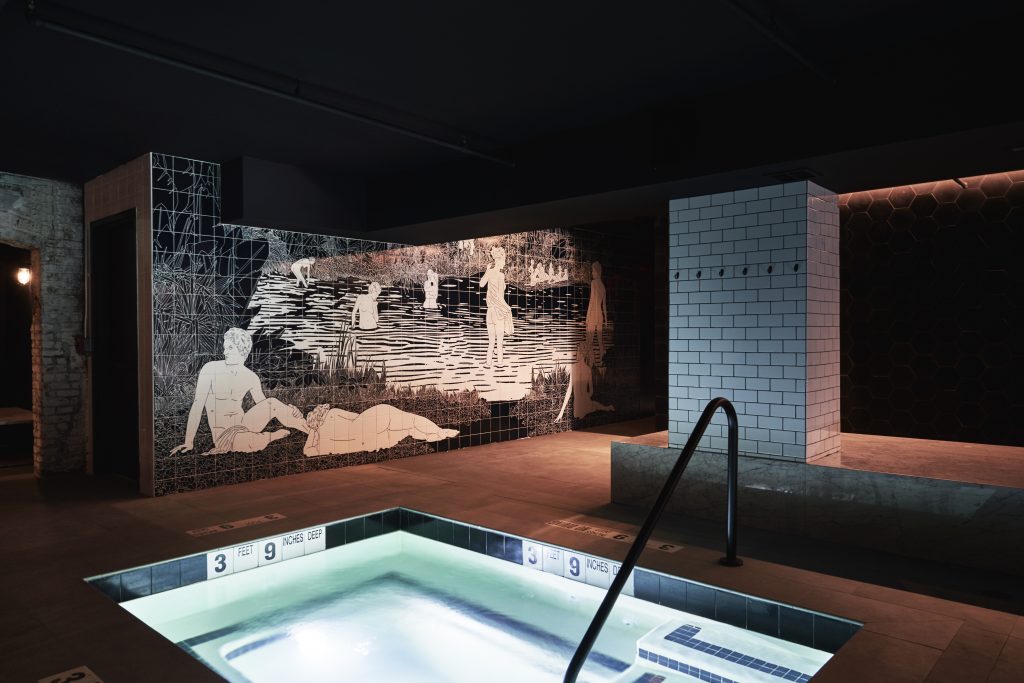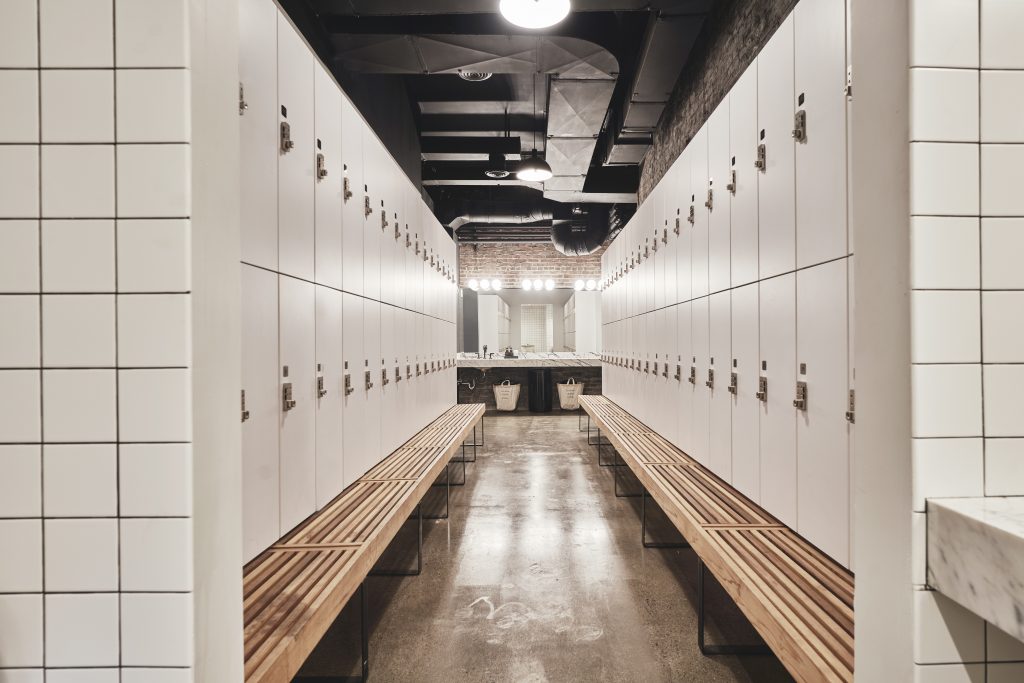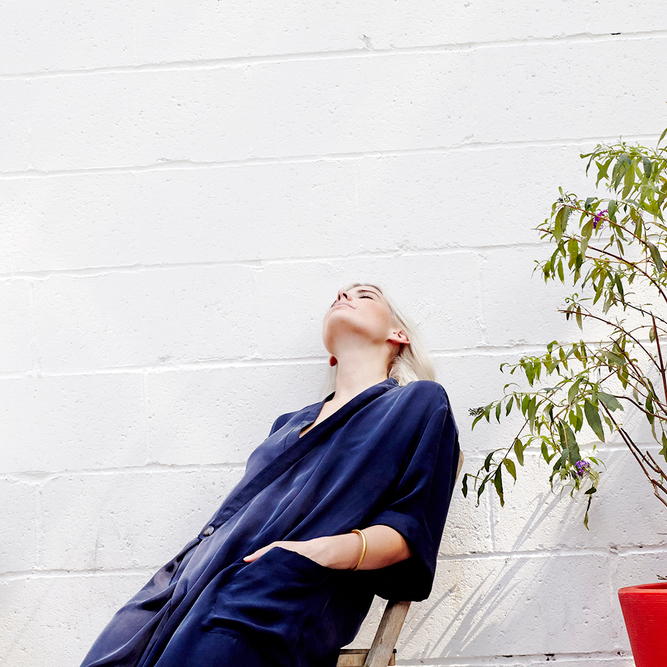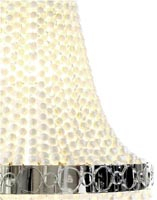Behind the Design of Williamsburg’s Bathhouse
Co-owners Travis Talmadge and Jason Goodman on their spa for the future in a century-old building

Williamsburg’s aptly named, recently opened Bathhouse—in a renovated 1930s soda factory that was once home to the Brooklyn Bottling Company and Dr. Brown’s Soda—has been renovated and designed by co-founders Travis Talmadge and Jason Goodman in collaboration with Jennifer Carpenter of Verona Carpenter Architects. The space meticulously preserves many of the original elements including the vaulted ceilings, original brickwork and a 100-foot-tall smokestack that now serves as a private ritual bath area. A striking custom concrete walkway flanked by giant infinity mirrored boxes leads guests through well-appointed locker room areas before descending to the 6,500-square-foot subterranean bathhouse.

At the forefront of the space is a custom dark aqua and white Roman bathhouse-inspired mural created by Brooklyn-based artist and illustrator Amit Greenberg. Various cedar wood saunas and a steam room with custom lighting inspired by the night sky activate the space, creating an ambiance that is social and also meditative. Also included are 10 treatment rooms with original ceilings and many eclectic design touches such as kilim rugs, tribal masks, and vintage anatomical illustrations. Hidden away in a quiet corner of the women’s locker area, one can find a ritual room with a single cast iron bathtub at the base of an illuminated 100-foot-tall brick smokestack.
Co-founders Travis Talmadge and Jason Goodman were instrumental in the design process. We sought their additional insight on each space within.

How did you choose the space?
Travis Talmadge: We knew that Williamsburg was the right neighborhood for us; the community here is so focused on fitness, mindfulness and design. We also knew that we wanted to be in an old building with great bones. We have a very modern vision as to what a bathhouse can be: blending the latest technology and modalities with techniques like sauna that go back thousands of years. So for us, an old building shell with a very modern interior was an obvious and natural fit. Just so happens, there are fewer and fewer post industrial buildings laying around in NYC’s great neighborhoods nowadays.

Tell us about the process of converting the space.
Jason Goodman: The building is over 100 years old and hadn’t been occupied in decades, so it was a process to modernize it for our use. The most difficult part was hand-digging the pools and removing all the old machine parts that were buried in the floor. We also came across a boulder in the soil where the hot pool is now that was the size of a Volkswagen. We had to buy a micro-blaster to detonate the boulders in order to break them up into pieces that were small enough to move.

What other bathhouses in the world inspired the design?
TT + JG: We tried to take our favorites from everywhere: we love the character of European bathhouses, the marble of the Turkish hammams, and the clean design from the Japanese onsen. Ultimately, we used those for inspiration but wanted to give this space its own identity entirely and the result is a very modern design inside an otherwise vintage space. The bathhouse is really a product of old and new. We have an experience centered around ancient rituals in a modern, clean space. The design reflects that and literally is a modern build-out inside an old factory. The result is a mix of clean lines and high-end materials with some existing brutalist textures. The whole space features a lot of contrast.

How were the color palettes and materials chosen?
TT + JG: Bathhouse is an elemental place, a place to tap into the fundamental humanity inside all of us. We wanted to keep the design very elemental and simple as well as sticking to natural materials, black and white.

What mood were you hoping to reflect in the design?
JG: A bathhouse from the future—elemental, modern, and intuitive. From our perspective, great design means a space that needs no explanation. You know where to go and what to do, just very natural from a usability perspective.
Images by Adrian Gaut












